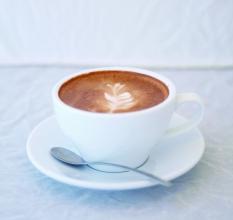Valenford Manor Coffee with long-lasting Fruit Flavor description of the grindability characteristics of the producing area
Located in the northwest of the Caribbean Sea, Jamaica is an island country at 17.42 degrees north latitude and 18.31 degrees north longitude and 76.11 degrees to 78.22 degrees west longitude. [1] the island of Jamaica is 234km long from east to west and 82km wide from north to south, with a territorial area of 11420 square kilometers, of which the land area is 10991 square kilometers. To the east across the Strait of Jamaica, facing Haiti, about 140 kilometers north of Cuba. It is the third largest island in the Caribbean, with a coastline of 1220 kilometers. Jamaica ranks third in the West Indies, second only to Cuba and Haiti. [2]
Topography
The coastal areas are alluvial plains. Such as: Guaneya plain; mountains in the east, hills and limestone plateaus in the middle and west. Karst landforms are well developed, lack of surface runoff and many caves. [2]
Climate
Tropical rainforest climate. The rainy season is from May to June and from September to November every year, with the most showers in January and May. The dry season is from December to March next year, and the weather turns cooler. The half-year period from June to the end of November is often hit by hurricanes and tropical storms. The north-central region is rich in rainfall, the climate is generally between 22 and 32 degrees, and the annual average temperature is 27 degrees. [6]
Resources
Jamaica's resources are mainly bauxite, with reserves of about 2.5 billion tons, ranking fourth in the world, with an exploitable capacity of 1.5 billion tons and an annual output of 15 million tons of bauxite, second only to Australia. [2] other rich resources include copper, iron, lead, zinc and gypsum. The forest area is 265000 hectares.
The Blue Mountains of Jamaica-the John Crowe Mountains are listed as both natural and cultural heritages, making the world-famous Blue Mountain Coffee from the region have a long aftertaste.
Jamaican Blue Mountain Coffee refers to coffee beans growing in the Blue Mountain area east of Kingston, the capital of Jamaica (with a height of more than 1000 meters).
The original imported ㊣ Jamaica Blue Mountain Coffee beans are only in the Blue Mountain Mountains. The legal production area of Blue Mountain Coffee is more than 2200 feet. Only the Blue Mountain Coffee fruits grown above 3800 feet above sea level are selected for processing.
There are three varieties of coffee in Jamaica:
⑴ Blue Mountain Coffee: planted above 666m above sea level
⑵ Alpine Coffee: grown below 666m in the Blue Mountain area
⑶ Jamaica Coffee: coffee is grown outside the Blue Mountains.
The best blue mountain coffee beans are NO.1 peaberry, also known as pearl beans, which are carefully selected small round beans and boutique products at an altitude of 2100 meters. The flavor is very full-bodied, with long-lasting fruit flavor. The particles are fuller. Suitable for moderate roasting, the caffeine content of Blue Mountain coffee is very low, less than half of other coffee, in line with the modern concept of health. Blue Mountain Coffee produces only about 40,000 bags a year, maintaining its top status today. Authentic Blue Mountain Coffee, excellent flavor, without it! It is widely rumored in Jamaica that the "rich and handsome" in coffee

Important Notice :
前街咖啡 FrontStreet Coffee has moved to new addredd:
FrontStreet Coffee Address: 315,Donghua East Road,GuangZhou
Tel:020 38364473
- Prev

Full-bodied and mellow Coffee Coffee in Jamaica introduction to the description of the Flavor of the Coffee Variety
Blue Mountain Coffee has the characteristics of all good coffee, not only full-bodied and mellow, but also because of the perfect combination of sweet, sour and bitter coffee, it has no bitter taste at all, only a moderate and perfect sour taste. It is generally drunk on a single product, but because the output is very small and the price is extremely expensive, it is generally made with coffee with a similar taste on the market. The real Blue Mountain Coffee is made from the best in the area.
- Next

Description of Coffee Flavor of Joy Manor in Nicaragua with bright sour taste introduction to the characteristics of grinding degree and taste
Nicaragua has a low flavor, chocolate, caramel sweetness, obvious almond flavor and bright sour taste, which is different from the rising tone of bright fruit acid in Central America. The coffee planting ecology of Nicaragua has a unique environment, which is full of fertile volcanic soil, coupled with shade planting methods, has established a good growth physique, so that Nicaraguan beans are not only rich in mellow, but also
Related
- Does Rose Summer choose Blue, Green or Red? Detailed explanation of Rose Summer Coffee plots and Classification in Panamanian Jade Manor
- What is the difference between the origin, producing area, processing plant, cooperative and manor of coffee beans?
- How fine does the espresso powder fit? how to grind the espresso?
- Sca coffee roasting degree color card coffee roasting degree 8 roasting color values what do you mean?
- The practice of lattes: how to make lattes at home
- Introduction to Indonesian Fine Coffee beans-- Java Coffee producing area of Indonesian Arabica Coffee
- How much will the flavor of light and medium roasted rose summer be expressed? What baking level is rose summer suitable for?
- Introduction to the characteristics of washing, sun-drying or wet-planing coffee commonly used in Mantenin, Indonesia
- Price characteristics of Arabica Coffee Bean Starbucks introduction to Manning Coffee Bean Taste producing area Variety Manor
- What is the authentic Yega flavor? What are the flavor characteristics of the really excellent Yejasuffi coffee beans?

